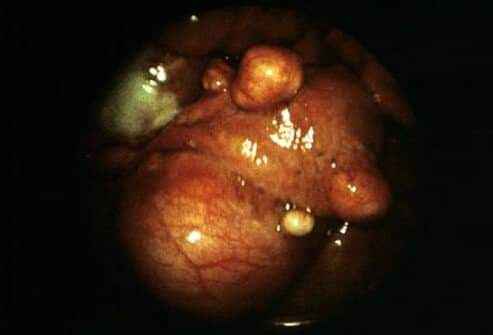𝗙𝗜𝗕𝗥𝗢𝗜𝗗𝗦
𝑾𝒉𝒂𝒕 𝒂𝒓𝒆 𝒇𝒊𝒃𝒓𝒐𝒊𝒅𝒔?
Fibroids are abnormal growths that develop in or on a woman’s uterus. Sometimes these tumors become quite large, or noncancerous. The cause of fibroids is unknown.
𝚃𝚈𝙿𝙴𝚂 𝙾𝙵 𝙵𝙸𝙱𝚁𝙾𝙸𝙳𝚂
The type of fibroid a woman develops depends on its location in or on the uterus.
Intramural fibroids
Intramural fibroids are the most common type of fibroid. These types appear within the muscular wall of the uterus. Intramural fibroids may grow larger and can stretch your womb.
Subserosal fibroids
Subserosal fibroids form on the outside of your uterus, which is called the serosa. They may grow large enough to make your womb appear bigger on one side.
Pedunculated fibroids
Subserosal tumors can develop a stem, a slender base that supports the tumor. When they do, they’re known as pedunculated fibroids.
Submucosal fibroids
These types of tumors develop in the middle muscle layer, or myometrium, of your uterus. Submucosal tumors aren’t as common as the other types.
𝙲𝙰𝚄𝚂𝙴𝚂 𝙾𝙵 𝙵𝙸𝙱𝚁𝙾𝙸𝙳𝚂
It’s unclear why fibroids develop, but several factors may influence their formation.
Hormones
Estrogen and progesterone are the hormones produced by the ovaries. They cause the uterine lining to regenerate during each menstrual cycle and may stimulate the growth of fibroids.
Family history
Fibroids may run in the family. If your mother, sister, or grandmother has a history of this condition, you may develop it as well.
𝐒𝐘𝐌𝐏𝐓𝐎𝐌𝐒 𝐎𝐅 𝐅𝐈𝐁𝐑𝐎𝐈𝐃𝐒
Symptoms of fibroids may include:
heavy bleeding between or during your periods that includes blood clots
pain in the pelvis or lower back
increased menstrual cramping
increased urination
pain during intercourse
menstruation that lasts longer than usual
pressure or fullness in your lower abdomen
swelling or enlargement of the abdomen
𝐓𝐑𝐄𝐀𝐓𝐌𝐄𝐍𝐓
1 .surgery
2.Medications-(IUD),,Birth control pills and antiinflammatory paim relievers etc
3.endometrial abiation









Fabi Mreggae
מחק תגובה
האם אתה בטוח שברצונך למחוק את התגובה הזו?